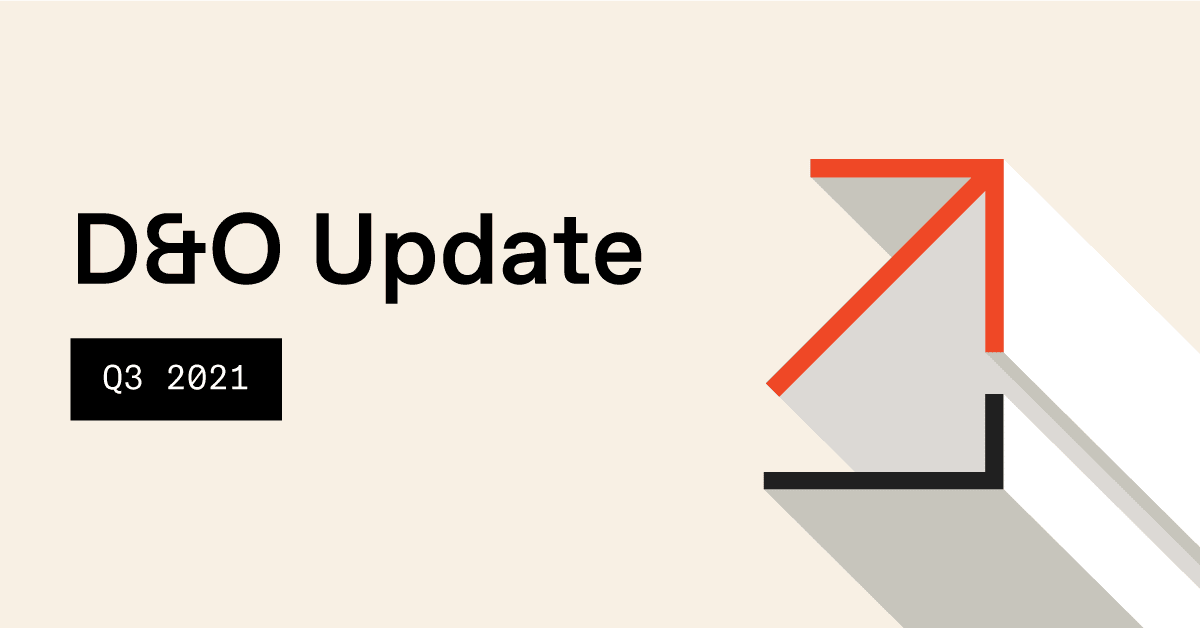Key Takeaways
Special purpose acquisition companies (SPACs) have made a spirited comeback in recent years by offering an alternative way to raise public capital. These “blank check companies” hit a record-breaking $13.6 billion in 2019 with their IPO fundraising. However, with significant leaps and bounds also comes substantial risks that need to be managed. In this post, we look at insurance ramifications for SPACs to consider in order to manage risk effectively.
Directors and Officers (D&O) Insurance
The directors and officers of a SPAC face unique challenges, unlike a traditional company. Its leaders put their personal assets at unparalleled risk. Remember, these leaders can’t use SPAC trusts to indemnify themselves should someone file a lawsuit against them. Instead, accused directors and officers must dig deep into their pockets to cover settlement costs.
And yet, founders can’t merely purchase a traditional D&O policy. The standards limitations don’t align with the outlook of most SPACs. For example, conventional D&O coverage typically extends for 12 months. Naturally, this policy period doesn’t work well for SPACs because of the exclusive time table on which they operate. Instead, policy periods focus on the projected length of the SPAC.
Keep in mind that standard practice is to purchase a D&O policy for the entire SPAC — no matter the SPACs duration. Without electing coverage initially, it’s tricky for SPACs to get go-forward coverage after de-SPACing. Thinking months or years into the future is a must for ventures such as these. It’s also vital to know what to expect when applying for D&O insurance for a SPAC.
Real-Life Underwriting Questions
Some people say that being prepared is half the victory. If that’s true, we want to help you secure a win by giving you a glimpse of what rolls across our desks here at Founder Shield. That said, below is a list of questions that one of our underwriters asked after sending a D&O submission their way.
- Can you give some insight as to why the market has your warrant priced at “x” given the period for Company to complete a “Qualifying Transaction” is only four months into its 23-month timeline?
- Per your prospectus, it is stated that you are focusing on companies with an enterprise value of $450,000 – $750,000; Why has the Company chosen this metric for its target value for possible acquisitions?
- In terms of your possible acquisitions, are you only considering 100% ownership in the entities they are considering acquiring?
- Would you consider any investment outside of North America? If so, would you consider emerging market opportunities?
- Can you provide a breakdown of ownership of the Class A ordinary shares of the entities who purchased during the initial public offering (IPO)? What percentage of the IPO was purchased by individual accredited investors?
Extended Reporting Coverage
It’s no surprise that most of the lawsuits SPACs face involve the IPO registration statement. Material misstatements, omissions, or allegations against a SPAC’s management team aren’t uncommon happenings for SPACs to tackle. Of course, SPAC IPO’s experience far less litigation than traditional IPOs; however, the legal concerns for SPACs are no minor hiccup.
As a result, SPACs must protect directors and officers from any allegations that arise post-IPO of the now-public entity. What’s more, this coverage needs to date back to the representations made during the process of taking the private entity public. Naturally, extended reporting coverage (ERC) is helpful for SPACs, because it provides coverage for claims made and reported after a claims-made policy has already expired.
Hundreds of federal securities class action lawsuits have been filed in the past few years. In 2018, the market capitalization losses were more than $1 trillion due to the barrage of cases. Some of the vulnerabilities include representations made within IPO roadshows, S-1s, quarterly and annual filings. Clearly, directors and officers face plenty of risk during this timeframe — but ERC helps decrease exposure.
D&O Coverage for the New Public Entity
Although SPACs raise money from an IPO solely to acquire another company, the new public entity still faces many of the same risks as traditional public companies. Keep in mind, the environment public companies operate in is continually influx. From new compliance requirements to regulatory enforcement trends, SPACs frequently experience complicated shifting regularly.
Furthermore, this distinct landscape changes the risk for public company directors and officers — increasing it significantly. These dynamics make robust D&O coverage all the more vital for liftoff. D&O insurance comes in three parts, which include:
Side A
Suppose directors are personally sued and are forced to pay defense costs and settlements, this portion of D&O insurance kicks in to protect the individual. However, Side A will only pay the individual directors if the entity can’t, such as if the company is insolvent.
Side B
When the company (or entity) indemnifies individuals named in the lawsuit, Side B coverage reimburses those costs. But it only extends to indemnifying insured individuals named in the lawsuit.
Side C
This coverage provides a balance sheet protection for the company if it is named in a lawsuit alongside an individual director. Side C coverage will reimburse the costs and settlements incurred.
Alternative Way to Raise Public Capital
As mentioned, SPACs have increased in popularity over the past several years. Another rising trend as an alternate means of raising public capital is a real estate investment trust (REIT). REITs are companies that own, operate, or finance income-producing real estate.
Furthermore, these trusts give all investors a shot at owning valuable real estate. Plus, investors have the opportunity to access dividend-based income and total returns. They work a lot like other investment options, purchasing individual company stock through a mutual fund or exchange-traded fund (EFT).
REIT stockholders earn a part of the profit through real estate investment. The best part is they can do so without ever having to shop, purchase, finance, or manage any property. According to Reit.com, 145 Americans own REIT stocks through investment or retirement funds, such as a 401(k). Since REITs offer the best of both worlds, it’s clear to see why they’re becoming so popular.
Understanding the details of what coverage your company needs can be a confusing process. Founder Shield specializes in knowing the risks your industry faces to make sure you have adequate protection. Feel free to reach out to us, and we’ll walk you through the process of finding the right policy for you.
Want to know more about D&O insurance? Talk to us! You can contact us at info@foundershield.com or create an account here to get started on a quote.











